Speech by the Chairman of the Autonomous Region
Located in the southwest frontier of the People's Republic of China, Tibet serves as an important gateway to South Asia. Tibet is an ethnic minority autonomous region where the Tibetan nationality has the largest population and other ethnic minorities gather and live together. With a long history and glorious culture, Tibet is famous for its beautiful natural scenery and unique folk-custom.
With abundant resources, the characteristics of Tibet are obvious. A new structure that advantageous industries such as tourism, Tibetan medicine, plateau special biology, catering, farming and livestock products processing, handicrafts and mining, and service industry such as trade circulation, transportation and post and telecommunications enjoy common development is come into being. After more than half a century's arduous struggle since the peaceful liberation, Tibet has entered in its best time for promoting development and maintaining stability. Thanks to the open-to traffic of Qinghai-Tibet railway and the reopening of Natural trade pass on China-India border, Tibet is now in front of good opportunity of great opening and development and becomes a hot district of investment. We will further expand opening-up and make concerted efforts to enhance construction of infrastructure and special industries, carving out a road of sustainable development with regional characteristics that conforms to practices of Tibet, so as to promote production, improve living standard, protect ecological environment and save energy.
Come to Tibet and know about Tibet. A mysterious and beautiful Tibet welcomes people from all walks of life to this land for either traveling or business. Looking forward to our mutual cooperation and common development.
I. Survey
(i) Geographic Location
Geographic Location
Tibet Autonomous Region, Zang for short, is located on southwest China border areas. It is situated 78'24"-99'06" east longitude and 26'52"-36'32" north latitude with an area of more than 1.2 million square kilometers, taking up 1/8 of the country's total area. Tibet is the main part of Qinghai-Tibetan Plateau, also called "the World Ridge", the highest plateau in the world with largest space. Tibet is contiguous to Xinjiang Uygur autonomous Region and Qinghai Province by the Kunlun and the Tanggula Mountains on the north, looks at Sichuan Province across the Jinsha River on the east, is connected with Yunnan Province on the southeast, borders Nepal, Bhutan, India, and Burmese by Himalayas on the south, and neighbors Kashmir on the west. With frontier extending 4,000 kilometers,Tibet plays a role of pass of southwest China with important strategic location.
Landform
Tibet is embraced by Himalayas, Kunlun Mountains, Kalakunlun Mountains and Hengduan Mountains. There are 31 peaks of over 7,000 meters at sea level, 5 peaks of over 8,000 meters at sea level in Tibet, where the world's highest summit Mt. Everest, the highest peak of Himalayas with a reputation of "the World Ridge" and "the Third Pole on the Globe", erects with an elevation of 8848.13 meters. There are valleys in the south and high and gigantic mountains and gorges in the east. Over 1,500 lakes are distributed in Tibet, covering an water area of nearly 30,000 thousand sq. km. Lake area stands at 24,183 sq. km., representing over one-third of the total lake area in China.
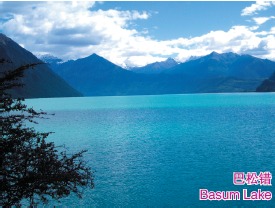
Tibet is roughly divided into four areas: the East Tibet Three Rivers Gorges is a unique picture of gorges with Jinsha River, Lancang River and Nu River fl owing through the mountains. Elevation difference between the peaks and valleys is 2,000 meters. The climate varies with altitude; snow persisting throughout the year on the top of the mountains, a dense growth of trees and plants covering the mountainside, and the countryside remaining evergreen at the foot of the mountains. The northwest section, called "Chang Tang" in Tibetan, which means "boundless grassland in the North", lies among Kunlun Mountains, Tanggula Mountains, and Gangdise and Nyainqentanglha Mountains. It stretches 2,400 kilometers in length and over 700 kilometers in width, covering 1/3 of Tibet's total area and averaging over 4,500 meters at sea level. Chang Tang, made up of round and gently sloping hills, stands major pastoral area of Tibet. The southern river valleys, located at south of Chang Tang grassland and north foot of the Himalayas, is composed of drainage area of Yarlung Zangbo River with elevation average at 3,500 meters. Sprawling on gentle slopes, the southern river valleys stand as the major farming area of Tibet with thick soil, rich water resources and suitable natural conditions. The Himalaya Mountains is located at southern Tibet, consisting of several mountains stretching from east to west. As the highest mountain range in the world, it averages approximately 6,000 meters in height. With relatively high elevation, the west is dry and cold while the east enjoys mild climate, plentiful rainfall, thick forest and diversified plants.
Hydrology
The drainage area of exterior river system in Tibet account for 49% of the total area of Tibet. Yarlung Zangbo River, with a total length of 2,057 kilometers, ranks the longest river in Tibet, the drainage area of which is 240,000 square kilometers. Its annual runoff volume ranks the 3rd in China, just next to the Yangtze River and the Pearl River. There are a lot of centripetal drainage systems with inland lakes as center, most of which are seasonal rivers.
Administrative Division
Tibet Autonomous Region has 72 counties, one county-level city (Xigaze), 6 prefectures and one city (Lhasa City). The major cities and towns include Lhasa, Xigaze, Qamdo, tsedang, Nagqu and Bayi. Lhasa is the regional capital of Tibet.
(ii)Climate
The large area, diversified landform, low latitude have formed complicated and unique climate of Tibet. Main features are thin air, low atmospheric pressure, scant oxygen, high elevation, strong sunlight, intense sunlight radiation, low temperature with small annual difference but big daily difference, distinct dry season and rainy season, which is a typical monsoon climate. Tibet oxygen content is only 60 percent to 65 percent of that of the sea level, and the air density 60 percent to 65 percent of that of the sea level. Due to the thin air and less dust, the sky of Qinghai-Tibet Plateau is particularly blue. With long hours of sunshine and intense solar radiation, the annual sunshine hour is about 1,500 to 3,400 hours. The western area has the longest hours of sunshine while the southeast part occupies less. The solar radiation is about 6,000 to 8,000 trillion joule per square meter. Direct sunlight accounts most of the sunshine hours with small annul difference.
(iii) Population and Ethnic Groups
At the end of 2005, Tibet had a population of 2.77 million, of which 0.5493 million were non-agricultural population and 2.2207 million were peasant. The population density was 2.21 per sq. km. Tibetan nationality originates from and lives in Tibet, and Tibetan people make up 92.03% of total population, amounting to 2.5493 million. Besides Tibetan nationality, there are han, Hui, Menba, Geba, Nu, Naxi, Tu, Dulong, Man, Bai, Buyi, Uygur, Miao and Xiaerba ethnic groups.
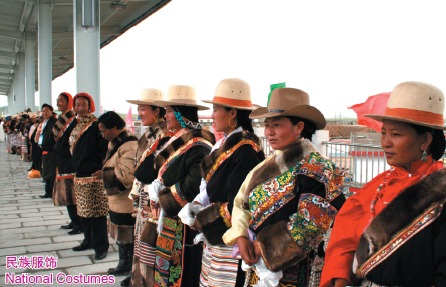
(iv) Infrastructures and Transportation
Road
The arterial highways of Tibet such as Qinghai-Tibet, Sichuan-Tibet, Xinjiang- Tibet, Yunnan-Tibet and China-Nepal highways, together with 325 feeder roads have formed a road transportation network with Lhasa as the center. Total length of Tibetan road reaches 43,717 km. In 2005, the highway passenger volume reached 4.7947 million person-time and freight volume 3.6961 thousand tons.
Aviation
There are 3 airports in Tibet, namely Lhasa Gongga Airport, Qamdo Bangda Airport and Linzhi Milin Airport. Lhasa has opened domestic air routes to Beijing, Chengdu, Xi'an, Shanghai, Guangzhou, Chongqing, Kunming, Xining, etc, as well as international air routes to the capital city of Nepal Katmandu. In 2005, the passenger volume reached 944.7 thousand person-time and freight volume 11.6 thousand tons.
Railroad
The overall length of Qinghai-Tibet railroad is 1,956 km. Qinghai-Tibet Railway from Golmud in Qinghai Province to Lhasa was open to traffic on Jul 1, 2006. The trains from Beijing to Lhasa, Chengdu (Chongqing) to Lhasa and Xining (Lanzhou) to Lhasa have been open to traffic.
Telecommunication
The posts and telecommunications industry enjoyed rapid development in Tibet Autonomous Region. In 2005, the business volume of posts and telecommunications industry achieved 1,648.330 million yuan, of which post business volume reached 104.66 million yuan, and telecom business volume (including mobile) 1,543.67 million yuan. In 2005, the urban telephone subscribers of Tibet reached 495,313 and rural telephone subscribers 30,396. The users of mobile phone reached 469,303. By the end of the year, subscribers of fixed phone and mobile phone amounted to 9.95 million with phone diffusion rate reaching 37 every hundred people.
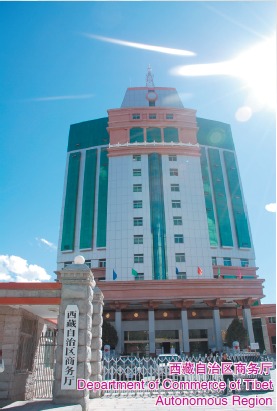
Finance
There are three commercial banks in Tibet, namely, Bank of China Tibet Branch, China Construction Bank Tibet Branch and Agricultural Bank of China Tibet Branch. The deposit balance of Tibetan financial institutions amounted to 45,511.39 million yuan.
Three Commercial Banks in Tibet
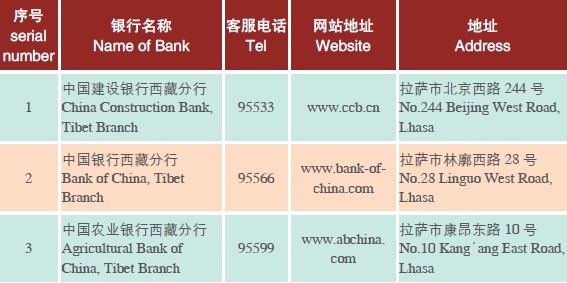
(v) Higher Education and Sci-Tech Research
High Education
Tibet has 4 institutions of higher learning, including Tibet University, Tibet Ethnic Institute, Tibet Institute of Agriculture and Animal Husbandry, and Tibet College of Tibetan Medicine with 18,979 college students and 2,033 faculties. In addition, there are 10 middle class professional schools with 7,027 students and 1,214 faculties.
Scientific Research
Tibet has 33 institutions that were independently engaged in scientific research, 9 private scientific research institutions, 54 scientific community in different fields, 140 agricultural and animal husbandry science and technology promotion institutions. There are 38,227 technicians, of which 1,825 are scientific research personnel. Among these scientific research personnel, there are 1 academician with the Chinese Academy of Sciences, 24 doctors and 126 leading scholars in different branches of learning. From 2000 to 2005, related departments completed 465 key scientific research projects of Tibet Autonomous Region and 118 national key scientific research projects, with one of which obtaining second award of Science and Technology Advancement Prize. The major projects include Yambajan cosmic rays observation, research on plateau atmosphere, deep exploration of Qinghai-Tibet plateau, prevention of geologic disaster such as debris flow, road disaster and earth quake, application of meteorological and remote sensing technology, integrated control of desertification and ecological environment protection, exploitation and utilization of mineral resources, exploitation and utilization of solar energy and plateau medical research, standardization of Tibetan pharmaceuticals, exploitation of traditional Tibetan pharmaceuticals, development of new Tibetan pharmaceuticals, exploitation and utilization of biological resources, etc. With effective progress, these scientific research projects obtained remarkable economic and social profit.
(vi)Tourism
Scenic Spot
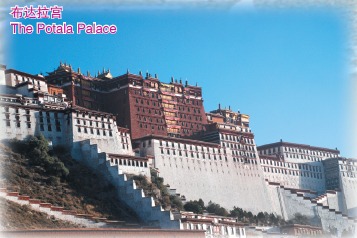
Tibet occupies abundant and unique tourism resources, including mountain view, waterscape, custom-folk landscape, etc. The sky, land and human landscape add radiance and beauty to each other, bringing a unique and diversified Tibet into being. Tibetan Buddhism originated from Tibet and was wildly spread in this land of long history. A number of temples, palaces, ancient walls, pagoda, stone caves and paintings gather in the territory of Tibet, each of them is the best of its kind. Famous ancient palaces, temples and tombs were included on the list of key cultural heritage or key historical cultural relics under state or regional protection, including Potala Palace, Yumbu
Lakang, Jokhang, Drepung Monastery, Sera Monastery, Sakya Kloster, TashilunpoT Kloster, Schalu Kloster, Die Koenigsgraeber and Ruinen Von GugeE. In addition to the cultural scenery, Tibet has a lot of natural scenic spots, such as Namtso Lake, Basum Lake, Lunang immense forest, Great Gorges of Yarlung Zangbo River, MT EVEREST, etc. The northern and western part of Tibet where Nakqu and Ali are located is known as "Roof of the World Roof" with an average elevation of over 4,500 meters. These sparsely inhabited regions are paradise of wild animals like wild yak, Tibetan antelope, goa, kiang, etc. With the open-to-traffic of Qinghai-Tibet railway, the beautiful scenery there will be available for tourists.
Local Products

There are a lot of local products in Tibet, including Tangka (scroll painting), carpet, tapestry, ecological plateau vegetables, highland barley products, Tibetan pharmaceuticals, tricholoma matsutake, the golden mushroom, aweto, Tibetan incense, tsampa (roasted barley) with butter and cheese, dried meet of yak, silver ornamental article and other Tibetan ornamental article, horn comb, wooden jewel box, etc. Tsampa, Tibet butter tea, air-dry beef and Qingke barley wine are main food of Tibetan.
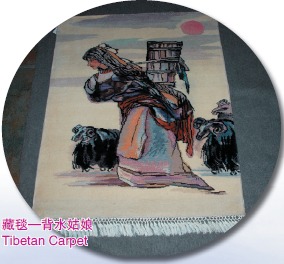
Festivals and Cultural Event
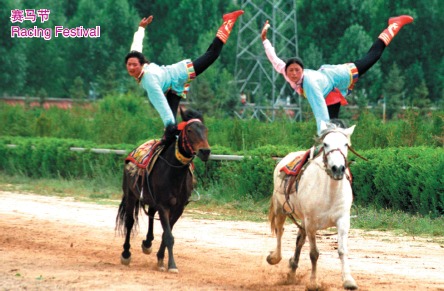
Tibet is of long history with a lot of special festivals, such as Tibetan New Year Festival (Losar), Saga Dawa Festival, Shoton festival, Harvest Festival, Horse Race Festival, Sangyang Festival, Yalong Cultural Festival, Gyantse Dama Festival, etc.
(vii) Foreign Exchange
Since the reform and opening-up, state guests, diplomats, officials of the UN and conference delegations of different countries and foreign journalists came to Tibet in an increasing number. Several batches of important guests such as the former king of Nepal, the former president of the US Carter, former chancellor of West Germany Cole and the senior expert on human rights of the UN Robinson successively, and Tibet Autonomous Region successfully finished the reception task. Tibet has established official and people-to-people exchange and cooperation relations with more than 10 countries such as Germany, the US, Japan, South Korea, Sweden, France, Nepal, Canada, Australia, Bolivia, etc as well as related organizations of the EU and UN. Cities of Tibet Autonomous Region also have made great contribution to Tibet's foreign relations, for example, Lhasa has paired with Boulder of United States and Potosi of Bolivia, and Shigatse has established friendly relations with Banipa of Nepal, which greatly enhanced contact with the world and promoted friendship and understanding so as to expand impact of Tibet in the international community.
(viii) Foreign-related Exhibition
The Tibet-Nepal Economic and Trade Forum is the most important foreign-related exhibition, which is regularly held alternatively in two countries every two years. Up to now, ten forums have been held in Lhasa, Shigatse and capital city of Nepal Kathmandu successively. The 10th Tibet—Nepal Economic and Trade Forum held in September 2005 arranged economic and trade negotiation, products exhibit for sale, economic and trade forum, policy clarification and signing ceremony of economic and trade cooperation, and obtained good effects.
(ix)Ports
Lhasa Gongga Airport First-grade National Port: Lhasa Gongga Airport is located in Zhulin Town of Gongga County of the Lhoka area, 95 kilometers southwest of Lhasa city. It is 7 kilometers away from the Gongga County of the Lhoka area, and the height above the sea-level is 3,600 m. There are several service agencies including Civil Aviation Bureau of Tibet, Bank of China, International Post, and air freight delivery. The international charter flight of Chengdu-Lhasa-Kathmandu, as well as the national charter flights of Chengdu-Lhasa-Hong Kong is provided in the airport. There are also offices of Tibet Customs, border checkpoint, Entry-exit Inspection and Quarantine Bureau there. In 2005, the export and import volume through the port was 150 tons, and the number of people exiting and entering was 19 thousand person-times.
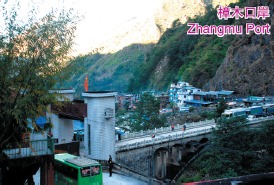
Zhangmu First-grade National Port: Zhangmu Port located in Southwest of Tibet, Zhangmu town of Nyalam County in the Shiagatse area. It is 477 kilometers away from Shiagatse city, 827 from Lhasa city. The altitude there is 1,770m. It is connected with Nepal, with the border line of 110 kilometers. In 2005, the export and import volume through the port was 66,217 tons, and the number of people exiting and entering was 73.8 thousand person-times.
Purang First-grade National Port: Purang National Port locates in the Purang County southeast of Ali Area. It is the southwest border of Tibet, with a border line of 410.56 kilometers. The altitude there is 3,770m. In history, Purang has always been the important distribution center of border trade of China, India and Nepal.
Kyirong First-grade National Port: It locates in the Kyirong Town of Kyirong County, southwest of the Xigaze area of the west area of Tibet. The altitude there is 2,850m. It is connected in the south with the Nepal with the border line of 162 kilometers. Rasua Brige, 22.778 kilometers away from Kyirong town, is the joint point and the boundary of the highways of the two countries. Jilong port, which was called the commercial road, the official road, and the war road, was one of the biggest overland trade ports in the history of Tibet.
Riwu second-grade port: It is located southwest of the Tingkye county of Xigazearea of Tibet, and 7.6 kilometers of the Tingkye county, which is 303 kilometers away from Xigaze city. It is connected with Nepal in the southwest and 39 kilometers from the border of Nepal, with a border line of 165 kilometers. It is a traditional border trade market for China and Nepal.
Yatung Renqinggang Border Trade Market: It is located in Yatung county of Xigaze area of Tibet, 580 kilometers from Lhasa and 309 kilometers from Xigaze. It is the south part of Tibetan Autonomous Region and the south part of the middle Himalayas, and is connected with the Bhutan and India in the east, south and west respectively, with a border line of 290 kilometer. According to the pact of India and China, the opening time of the port is from April to September every year.
Related Articles:
Doing Business in TAR of China: Economy
Doing Business in TAR of China: Investment
Doing Business in TAR of China: Development Zones





